Intense Pulsed Light ( Photo Rejuvenation ) Surgery
Intense pulsed light (IPL), is a technology aimed at producing light of high intensity during a very short period of time. It involves specific lamps together with capacitors whose rapid discharge provides the high energy required.
It is a method of hair removal from the body most commonly employed by medical practitioners and estheticians. It involves the use of a specially constructed xenon flash lamp and focusing optics.
Cheaper and faster than laser hair removal, the IPL removal procedure has become very popular. Although the precise effectiveness of IPL compared to laser epilation is debated by scientists, equipment manufacturers and practitioners, their results are generally accepted to be roughly equivalent. IPL can also be used as a skin treatment in a process known as photorejuvenation.
IPL technology is also employed in the treatment of medical disorders of the skin including:
The pulses of light produced by IPL equipment are very short in duration, so discomfort and damage to non-target tissues is minor. Most people who undergo IPL epilation only experience slight irritation similar to that of a minor sunburn though under certain circumstances, blisters may occur. Men undergoing the procedure experience greater discomfort as male body hair is generally thicker than women's. Depending on the instrument settings and intensity, treating sensitive areas such as the chest and face can result in pain comparable to waxing the same areas; however this pain dissipates immediately. The light that emanates from the IPL wand is filtered to remove any ultraviolet components, eliminating the possibility of UV skin damage.
IPL's (Intense Pulsed Light) work more directly on the top layers of the skin and do not penetrate deep enough to damage hair germ cells, without potential damage to the epidermis.
IPL therapy is considered a non-ablative resurfacing technique, which means that it targets the lower layers of skin (dermis) without affecting the top layers of skin (epidermis). The results are not as dramatic as ablative resurfacing where both the dermis and epidermis are injured to produce a much more noticeable overall outcome. The advantage of IPL therapy is its minimal downtime – a patient can often have the procedure done in their lunch break and return to work immediately afterwards
IPL treatments are normally straightforward. Make sure the technician has been properly trained and is experienced in IPL therapy.
IPL technology improves the appearance of photoaged skin, removes age spots (sun-induced freckles), most benign brown pigments, and redness caused by broken capillaries through a process called photorejuvenation for face and body. The process is ideal for patients with active lifestyles because the procedure requires minimal downtime and has a low risk of side effects.
The gentle, non-ablative treatments use broad spectrum light to treat the face, chest, neck and hands—virtually anywhere that sun damage shows.

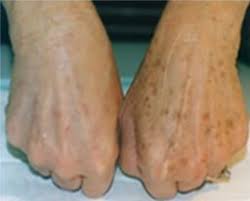

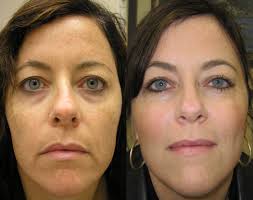




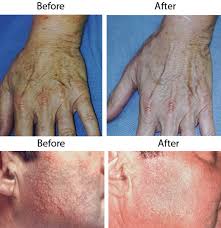
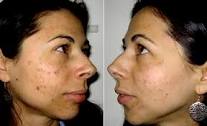

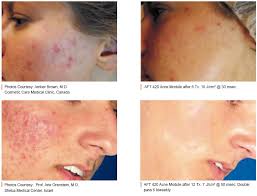
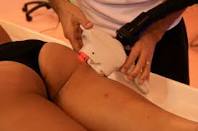
It is a method of hair removal from the body most commonly employed by medical practitioners and estheticians. It involves the use of a specially constructed xenon flash lamp and focusing optics.
Cheaper and faster than laser hair removal, the IPL removal procedure has become very popular. Although the precise effectiveness of IPL compared to laser epilation is debated by scientists, equipment manufacturers and practitioners, their results are generally accepted to be roughly equivalent. IPL can also be used as a skin treatment in a process known as photorejuvenation.
Hair removal mechanics
The focused, broad-spectrum light is applied to the surface of the skin by way of either a hand-held wand or an articulated arm. This light travels through the skin until it strikes the hair shafts or the bulb (root) of the hair. The bulb is usually where the highest concentration of melanin is located, as opposed to the rest of the hair shaft. As the light is converted to heat energy, the bulb and most of the hair shaft are instantly vaporized. The intense heat radiated by the hair also destroys the hair-producing papilla or the entire hair follicle. It is also claimed that direct light-heat conversion occurs directly in the darker colored capillaries that bring nourishing blood vessels to the follicle. Contrary to what is often announced, Photoepilation is not a permanent hair removal method but a permanent hair reduction method. This means that although IPL treatments with these devices will permanently reduce the total number of body hairs, they will not result in a permanent removal of all hair[1].IPL technology is also employed in the treatment of medical disorders of the skin including:
- Sun damage induced dyspigmentation and vascular changes
- Poikiloderma of Civatte
- Acne Rosacea
- Broken capillaries/telangiectases
- Vascular and pigmented birth marks
The pulses of light produced by IPL equipment are very short in duration, so discomfort and damage to non-target tissues is minor. Most people who undergo IPL epilation only experience slight irritation similar to that of a minor sunburn though under certain circumstances, blisters may occur. Men undergoing the procedure experience greater discomfort as male body hair is generally thicker than women's. Depending on the instrument settings and intensity, treating sensitive areas such as the chest and face can result in pain comparable to waxing the same areas; however this pain dissipates immediately. The light that emanates from the IPL wand is filtered to remove any ultraviolet components, eliminating the possibility of UV skin damage.
IPL's (Intense Pulsed Light) work more directly on the top layers of the skin and do not penetrate deep enough to damage hair germ cells, without potential damage to the epidermis.
How does it work?
IPL systems work on the same principles as lasers in that light energy is absorbed into particular target cells with colour (chromophores) in the skin. The light energy is converted to heat energy, which causes damage to the specific target area. IPL systems are different to lasers in that they deliver many wavelengths (or colours) in each pulse of light instead of just one wavelength. Most IPL systems use filters to refine the energy output for the treatment of certain areas. This enhances penetration without using excessive energy levels and enables targetting of specific chromophores (these are skin components that absorb light).IPL therapy is considered a non-ablative resurfacing technique, which means that it targets the lower layers of skin (dermis) without affecting the top layers of skin (epidermis). The results are not as dramatic as ablative resurfacing where both the dermis and epidermis are injured to produce a much more noticeable overall outcome. The advantage of IPL therapy is its minimal downtime – a patient can often have the procedure done in their lunch break and return to work immediately afterwards
What does the procedure involve?
Prior to the procedure your specialist practitioner should explain the process to you and clearly define your expectations of the treatment. They should be able to tell you whether or not the results you are looking for will be achievable using this method. It is important that the correct diagnosis has been made by your doctor prior to treatment.IPL treatments are normally straightforward. Make sure the technician has been properly trained and is experienced in IPL therapy.
- Avoid sun exposure in the days and weeks before and after treatment.
- A topical anaesthetic may be applied to the area but is not usually necessary.
- Cold gel is applied to the area being treated. IPL devices often have integrated cooling systems.
- The smooth, glass surface of the IPL treatment head is applied to the skin, delivering precise pulses of light to the area being treated.
- Treatment sessions usually last about 20 minutes. A course of 4-6 sessions every 3-6 weeks may be needed to achieve desired results.
- Most patients can return to work immediately after treatment.
Are there any side effects?
Side effects are minor and include:- Pain during treatment (reduced by contact cooling and if necessary, topical anaesthetic)
- Skin turning pink and a little sore immediately after the procedure.
- Sensation of a mild sunburn (redness, peeling, swelling) that may last a few days after treatment.
- Rarely, skin pigment may absorb too much light energy and blistering can occur.
- Sometimes the pigment cells (melanocytes) can be damaged leaving darker or paler patches of skin. White patches or scars are rarely permanent.
- Hair loss may occur.
- Bruising affects up to 10% of patients
IPL Skin Treatments Using Photorejuvenation
As the population ages, ever-increasing numbers of people are interested in improving their appearance. IPL technology can be used to help restore the skin's youthful appearance.IPL technology improves the appearance of photoaged skin, removes age spots (sun-induced freckles), most benign brown pigments, and redness caused by broken capillaries through a process called photorejuvenation for face and body. The process is ideal for patients with active lifestyles because the procedure requires minimal downtime and has a low risk of side effects.
The gentle, non-ablative treatments use broad spectrum light to treat the face, chest, neck and hands—virtually anywhere that sun damage shows.






0 comments:
Post a Comment